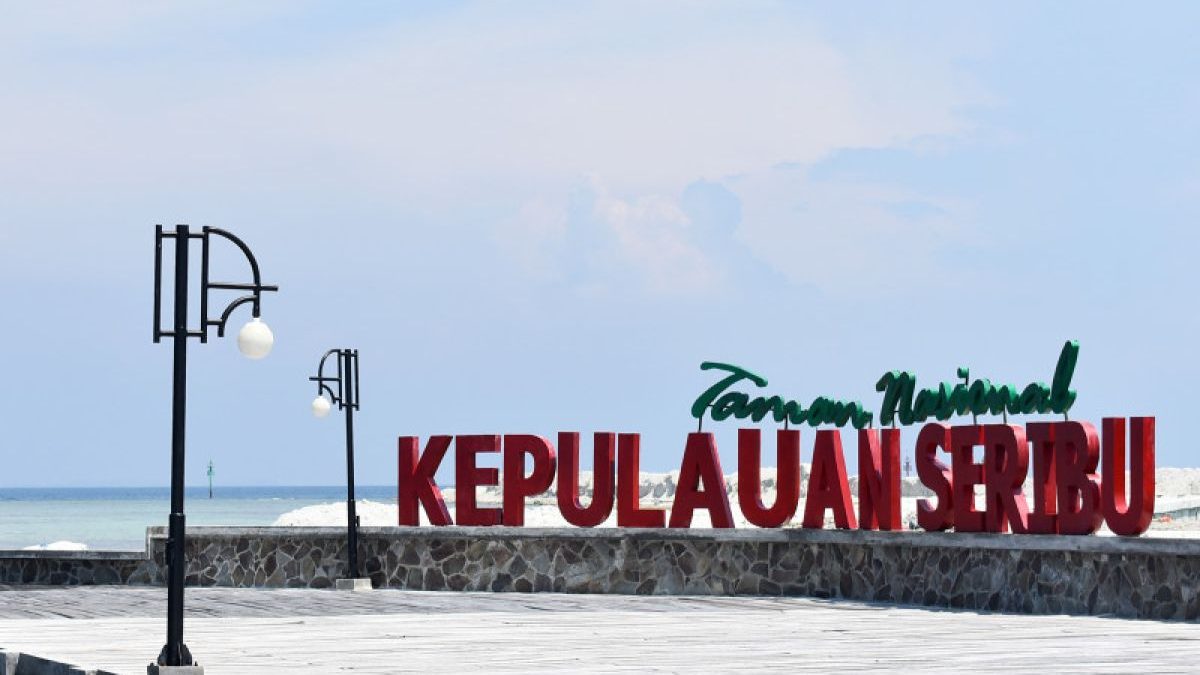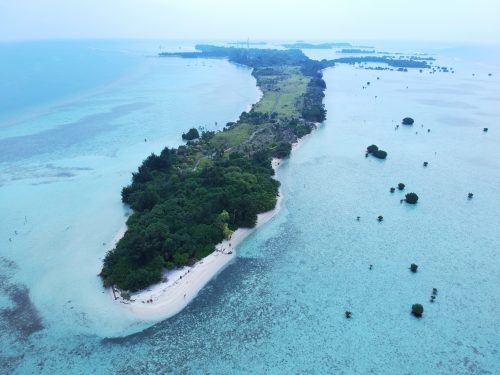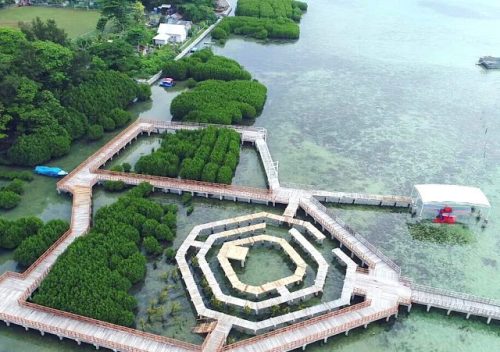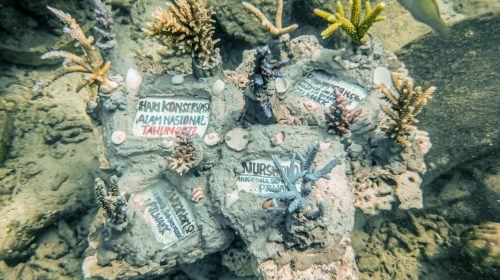Introducing Kepulauan Seribu National Park

Photo Credit : Fauzi Lamboka/Antaranews
Kepulauan Seribu National Park (TNKS) is one of the seven Marine National Parks under the Ministry of Environment and Forestry (KLHK) in Indonesia. It is the only National Park located in the capital city of Jakarta, specifically in the Kepulauan Seribu Regency. The park is situated approximately 45km north of Jakarta, covering a marine area of 107,489 hectares. Kepulauan Seribu National Park consists of an ecosystem of very small islands and shallow sea waters, including a cluster of 78 tiny islands, 86 sandbars, and approximately 2,136 hectares of shallow coral sandbanks, fringing coral reefs, mangroves and seagrass beds. The term "sandbar" refers to coral reefs or white sandy areas that emerge at the surface of shallow waters due to the movement of waves carrying sand particles from the shoreline. Over time, the sand follows the regular wave currents and gradually settles, forming sand dunes or coral reefs known as sandbars.

Photo Credit : Lucky Christiawan
What is a National Park?
A National Park is a protected area that preserves natural ecosystems and is managed through zoning systems for research, scientific purposes, education, supporting cultivation, tourism and recreation. In 2002, Kepulauan Seribu National Park was established by the Ministry of Forestry through Ministerial Decree No. SK. 6310/Kpts-II/2002, covering an area of 107,489 hectares. The designation of Kepulauan Seribu as a National Park aims to protect four key values: Coral Reefs, Mangroves, Hawksbill Turtles (Eretmochelys imbricata), Giant Clams (Tridacna gigas) and other marine organisms used for research, science and education purposes.

Photo Credit : Pustek-KL
Fauna in Kepulauan Seribu National Park
Kepulauan Seribu National Park is home to various species, including:
- Turtles : Two turtle species can be found in the park, namely the Hawksbill Turtle (Eretmochelys imbricata) and the Green Turtle (Chelonia mydas).

Photo Credit : KSDAE
- Birds : Several bird species can be found here, including seagulls, eagles and owls.
- Grouper Fish : Grouper fish are quite famous among tourists.
- Brahminy Kite : Brahminy kites are also well-known fauna in this archipelago.
- Monitor Lizards, Ringed Snakes and Pythons : Most of the park's beaches are protected by mangrove forests, which serve as habitats for monitor lizards, ringed snakes and pythons.
Among these species, the most famous mascots of Kepulauan Seribu National Park are the Hawksbill Turtle (Eretmochelys imbricata), Green Turtle (Chelonia mydas), Brahminy Kite and Grouper Fish. These three species have become mascots due to their declining populations and conservation efforts have been focused on breeding them in the islands.
Importance of Kepulauan Seribu National Park
Kepulauan Seribu hold significant value for research and scientific purposes. Some studies conducted in this area include biodiversity assessments, water quality and pollution studies, climate change and its effects, as well as education and public awareness. Biodiversity research aims to identify the species in the area, including marine flora and fauna, coral reefs and mangroves. Studies on water quality and pollution assist in monitoring environmental health and provide information on necessary restoration and preservation efforts. Research on climate change and its effects focuses on increasing sea temperatures, rising acidity levels and changing weather patterns. Meanwhile, research on education and public awareness aims to understand the local community's knowledge and awareness of the existence of Kepulauan Seribu National Park and design effective educational programs and awareness campaigns.
Condition of Kepulauan Seribu National Park
Senior researchers from the Oceanography Research Center (BRIN) have reported coral bleaching phenomena occurring on a global scale, which is also observed in Kepulauan Seribu National Park. This condition sometimes leads to coral death. This occurs due to the rising sea temperatures exceeding the normal annual conditions (hot spots), which trigger excessive production of certain chemicals by the coral's microalgae zooxanthellae, harming the coral polyps. Gradually, the zooxanthellae are expelled from the coral tissues. As a result, the coral tissues lose their color pigments and become transparent, revealing their white calcareous skeletons.

Photo Credit : KSDAE
Nature Conservation Efforts
Preserving the natural environment in the Kepulauan Seribu requires collaborative efforts from various stakeholders. Some efforts that can be undertaken include:
- Increasing Public Awareness : Through educational campaigns and accurate information, it is essential to raise public awareness about the importance of conserving the natural environment and ecosystems of the Kepulauan Seribu. This can be achieved through outreach programs, seminars and other participatory activities.
- Sustainable Resource Management : Efforts should be made to manage natural resources sustainably. This involves regulating activities such as tourism, fisheries and agriculture to maintain ecosystem balance and ensure these activities do not harm the environment.
- Encouraging Research and Monitoring : Continuous research and monitoring of the ecosystem in Kepulauan Seribu National Park are crucial for understanding its dynamics, identifying potential threats and implementing appropriate conservation measures. This can involve collaborations with scientific institutions, universities and government agencies to conduct studies and collect data.
- Strengthening Law Enforcement : Effective enforcement of laws and regulations related to environmental protection is essential to prevent illegal activities such as poaching, illegal fishing and destructive practices. This can involve increasing the presence of park rangers and implementing stricter penalties for offenders.
- Engaging Local Communities : Involving local communities in conservation efforts is vital for long-term sustainability. This can include providing alternative livelihood options, promoting eco-tourism and educating local residents about the importance of preserving their natural resources.
- Restoration and Rehabilitation : When necessary, restoration and rehabilitation efforts can be undertaken to restore damaged ecosystems, such as coral reef restoration projects or mangrove rehabilitation programs.
By implementing these conservation measures and engaging all relevant stakeholders, the Kepulauan Seribu National Park can continue to protect and preserve its unique marine ecosystem for future generations to enjoy and benefit from.

